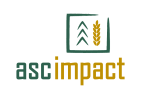The world is rich with minerals that are essential for various industries, from construction to electronics. However, these mineral resources are not evenly distributed across the globe. Understanding where these minerals are found, and how they are extracted, is crucial for industries and economies worldwide.
In this article, we will explore the global distribution of minerals, the processes involved in mineral exploration and mining, and the significance of these resources.
What Are Mineral Resources?
Mineral resources are naturally occurring substances that are extracted from the Earth for their economic value. They include metals like gold, silver, and copper, as well as non-metallic minerals like limestone, gypsum, and phosphate.
Types of Mineral Resources
Mineral resources can be broadly categorized into two types:
- Metallic Minerals: These include precious metals (gold, silver), base metals (copper, zinc), and rare earth elements (neodymium, lanthanum).
- Non-metallic Minerals: These include industrial minerals (limestone, gypsum) and energy minerals (coal, uranium).
Global Distribution of Minerals
Mineral resources are unevenly distributed across the planet due to geological processes. Some regions are rich in specific minerals, while others may have little to none.
Major Mineral-Rich Regions
- Africa: Africa is rich in precious metals like gold and platinum, as well as diamonds. Countries like South Africa and Ghana are known for their extensive gold mines.
- North America: The United States and Canada are significant producers of metals like copper, gold, and silver. The Canadian Shield is particularly rich in mineral deposits.
- South America: Countries like Chile and Peru are major producers of copper and silver. The Andes Mountains are a significant source of these minerals.
- Asia: China is a leading producer of rare earth elements and has extensive coal and iron ore deposits. India is known for its rich reserves of iron ore and bauxite.
- Australia: Australia is abundant in minerals like iron ore, gold, and bauxite. The country is one of the largest producers of these minerals globally.
Factors Affecting Distribution
The distribution of mineral resources is influenced by various geological processes, including:
- Plate Tectonics: The movement of Earth’s plates can create mineral-rich areas through volcanic activity and the formation of mountain ranges.
- Erosion and Weathering: These processes can concentrate minerals in certain areas, making them easier to extract.
- Sedimentation: The deposition of mineral-rich sediments in riverbeds and coastal areas can create valuable mineral deposits.
The Process of Mineral Exploration
Before mining can begin, it is essential to locate mineral deposits. This process, known as mineral exploration, involves several steps:
1. Preliminary Survey
Geologists conduct preliminary surveys to identify areas with potential mineral deposits. This may involve studying geological maps, satellite images, and historical mining data.
2. Geochemical and Geophysical Surveys
Geochemical surveys involve analyzing soil, rock, and water samples to detect the presence of minerals. Geophysical surveys use techniques like magnetic and seismic methods to map underground mineral deposits.
3. Drilling and Sampling
Once a potential deposit is identified, drilling is conducted to extract samples. These samples are analyzed to determine the concentration and quality of the minerals.
4. Feasibility Study
A feasibility study is conducted to assess the economic viability of mining the deposit. This includes evaluating the cost of extraction, environmental impact, and potential profits.
Mining: Extracting Mineral Resources
Mining is the process of extracting mineral resources from the Earth. There are several methods of mining, each suited to different types of deposits and environmental conditions.
Types of Mining
- Surface Mining: This method involves removing the top layers of soil and rock to access mineral deposits. Types of surface mining include open-pit mining, strip mining, and quarrying.
- Underground Mining: This method is used to access mineral deposits deep underground. It involves creating tunnels and shafts to reach the ore. Types of underground mining include room-and-pillar, longwall, and block caving.
- Placer Mining: This method involves extracting minerals from alluvial deposits, such as riverbeds and beach sands. It is commonly used for gold and diamond mining.
Environmental Impact of Mining
While mining is essential for obtaining valuable minerals, it can have significant environmental impacts:
- Habitat Destruction: Surface mining can result in the destruction of habitats and ecosystems.
- Water Pollution: Mining operations can contaminate water sources with chemicals and heavy metals.
- Air Pollution: Dust and emissions from mining activities can contribute to air pollution.
- Soil Erosion: The removal of vegetation and topsoil can lead to soil erosion and degradation.
The Importance of Sustainable Mining
Given the environmental impacts of mining, it is crucial to adopt sustainable practices that minimize harm to the environment and local communities.
Sustainable Mining Practices
- Rehabilitation: Restoring mined areas to their natural state by replanting vegetation and rehabilitating ecosystems.
- Waste Management: Proper disposal and treatment of mining waste to prevent environmental contamination.
- Water Management: Implementing measures to protect water sources and reduce water usage in mining operations.
- Community Engagement: Involving local communities in decision-making processes and ensuring they benefit from mining activities.
Conclusion
Understanding the global distribution of minerals and the processes involved in their extraction is essential for industries and economies. While mining is necessary for obtaining valuable resources, it is crucial to adopt sustainable practices that minimize environmental impacts and benefit local communities.
By balancing economic development with environmental protection, we can ensure that the extraction of mineral resources contributes to a sustainable and prosperous future.


















































